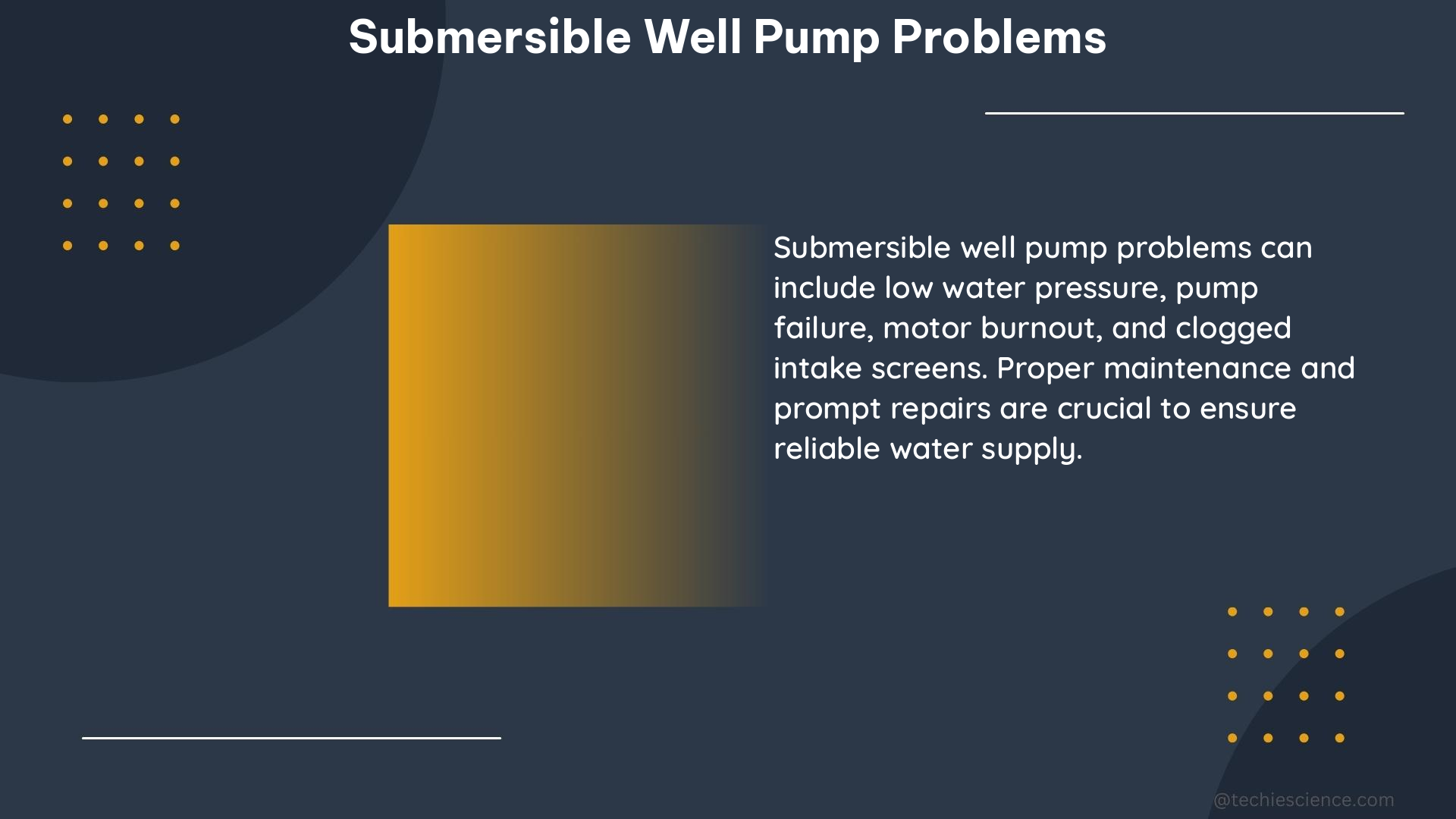Submersible well pumps are essential for drawing water from underground sources, but they can encounter various problems that affect their performance and efficiency. This comprehensive guide will delve into the measurable, quantifiable data points related to submersible well pump problems, providing you with a detailed understanding of how to diagnose and address these issues effectively.
Voltage Readings
Proper voltage supply is crucial for the smooth operation of a submersible well pump. By taking voltage measurements, you can identify any electrical issues in the system. Ideally, you should observe the following voltage readings:
- Line terminals: 240V
- L1 and L2 terminals: 240V
If the voltage readings deviate significantly from these values, it could indicate a problem with the power supply, wiring, or the pump’s electrical components.
Amperage Draw

The amperage draw of a submersible well pump is another important parameter to monitor. A properly functioning pump should draw around 5 to 9 amps during operation. If the amperage draw is significantly higher or lower than this range, it could signify an issue with the pump’s motor, impeller, or other internal components.
Resistance Measurements
Insulation resistance tests can help detect issues in the motor windings of a submersible well pump. The acceptable threshold for insulation resistance is typically above 500,000 ohms. If the resistance falls below this value, it may indicate a problem with the motor’s insulation, which could lead to electrical shorts or ground faults.
Well Depth and Pump Depth
The depth of the well and the depth at which the pump is installed are crucial factors in determining the appropriate pressure tank size and pump capacity. For instance, if the pump is installed at a depth of 20 feet in a 50-foot-deep well, the increased pump efficiency may require a larger pressure tank to accommodate the higher flow rate.
Pressure Tank Draw Down Volume
The draw down volume of the pressure tank is directly related to the pump’s gallons per minute (GPM) rating, horsepower, and system pressure. As a general guideline, a 10 GPM pump with 1/2 horsepower should have a 10-gallon draw down reservoir in the pressure tank for optimal performance.
Cycle Rate
The cycle rate of a submersible well pump refers to how often it turns on and off. Short cycling, where the pump runs, pressurizes the tank, and then immediately runs again, can lead to overheating and premature failure of the pump’s components. Monitoring the cycle rate can help identify issues with the pressure switch, pressure tank, or other system components.
Additional Considerations
Apart from the data points mentioned above, there are other factors to consider when troubleshooting submersible well pump problems:
- Water Quality: Mineral deposits, sediment, or other contaminants in the water can clog the pump’s impeller, valves, or intake screen, reducing its efficiency and lifespan.
- Pump Age and Wear: Over time, the pump’s internal components, such as the impeller, bearings, and seals, can wear down, leading to decreased performance and eventual failure.
- Pump Sizing: Ensuring that the pump is properly sized for the well’s depth, water demand, and pressure requirements is crucial for its optimal operation.
- Electrical Connections: Proper wiring, grounding, and the condition of electrical connections can impact the pump’s performance and safety.
- Water Table Fluctuations: Changes in the water table level can affect the pump’s suction and discharge pressures, potentially causing issues like cavitation or loss of prime.
By understanding and monitoring these quantifiable data points, homeowners and professionals can effectively diagnose and address submersible well pump problems, ensuring reliable and efficient water supply.
References:
- Well Pump Troubleshooting
- Diagnose and Replace a Submersible Well Pump
- Water Well Pump Problem
- Submersible Pump Troubleshooting Guide
- Troubleshooting Submersible Pump Problems

The lambdageeks.com Core SME Team is a group of experienced subject matter experts from diverse scientific and technical fields including Physics, Chemistry, Technology,Electronics & Electrical Engineering, Automotive, Mechanical Engineering. Our team collaborates to create high-quality, well-researched articles on a wide range of science and technology topics for the lambdageeks.com website.
All Our Senior SME are having more than 7 Years of experience in the respective fields . They are either Working Industry Professionals or assocaited With different Universities. Refer Our Authors Page to get to know About our Core SMEs.